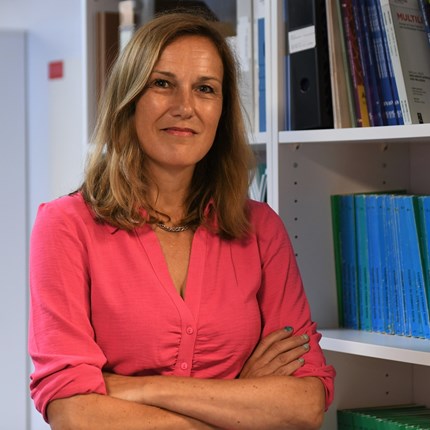
Norwegian men as an export item
Norwegian men pushing prams during working hours have caught the attention of the EU. The EU and multinational corporations are now introducing paternity leave, inspired by the Norwegian father's quota.
`Norwegian men are great, and of course, no-one must think that we wish to send them out of the country´, says PhD scholar Agnes Bamford jokingly.
She works at the Department for Professional and Intercultural Communication at NHH and is researching international corporate communication and implementation of paternity leave, says .
Norwegian men are contributing to gender equality
`My point is that Norwegian men have succeeded as first movers in an area where few men in the world have ventured. By taking up the earmarked father's quota, they are engaging in a new type of involved fatherhood.

Around 90 per cent of fathers in Norway take paternity leave. They are thus contributing to gender equality, and fathers are developing strong bonds with the children and confidence and competence´, says Bamford.
The Norwegian father's quota (introduced in 1993) consists of 15 weeks of leave (since 2018) earmarked for new fathers. It is practised under the principle of 'use it or lose it,' meaning that it is lost if not taken and cannot be transferred to the mother.
The EU has become aware of the Norwegian father's quota as an effective means of achieving gender equality and that this benefit may contribute to solving critical challenges:
The EU wishes to increase women's participation in the workforce and provide equal career opportunities to women and men. Gender equality is correlated with high productivity and increased birth rates, says Bamford.
Additionally, the EU has introduced a new directive, explains the researcher. By 4th April 2022, all EU member states were required to offer ten days of paid paternity leave. - This is why the Norwegian paternity leave is seen as a form of «export from Norway to the EU.»

«McKinsey's war for talent»
In her research, Bamford is studying four multinational corporations to find out how they have communicated and implemented their global paternity leave policies, launched in 2017 and 2019.
`There is a gender equality focus here linked to women not being discriminated against for taking leave following childbirth. The emphasis on talent management can be related to «McKinsey's war for talent», in which companies are competing for a limited number of qualified employees. The companies I am researching have between 10000 and 30000 employees and wish to attract and retain talent. They are introducing gender equality measures to remain attractive. This is about social sustainability and future generations and how they want to be supported in the workplace´, says Bamford.
The four global companies have succeeded in implementing paternity leave, asserts Bamford – and not only in European countries.

Women who wish to travel are forced to share irrelevant and intimate details about their private lives.
`I interviewed an employee in a South American country, a man who had taken paternity leave. He said that hardly any other companies in his country facilitate that their male employees spend time at home with young children. So in his view, paternity leave is a competitive advantage that makes the company he works for particularly attractive´, says the NHH researcher.
How did they succeed?
`All the companies and employees perceive this as a successful implementation. They have a high percentage of men who have taken paternity leave. This has, in many ways, created a new company culture´.
As part of her dissertation, Bamford has investigated how the companies have succeeded with this process. There are three important factors:
- HR and Communications worked closely together throughout the process
- Local line Managers were given considerable responsibility and influence
- Two-way Communication: Corporate news stories contained personal stories from men who had taken leave.
`It's evident that the men are very proud to work for companies that offer paternity leave and encourage fathers to spend more time with their children. Bamford concludes that the two-way communication from the corporations involved men to a large extent and seems to have influenced the success of the policies.